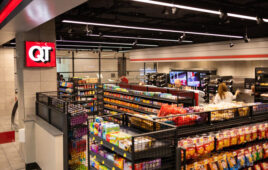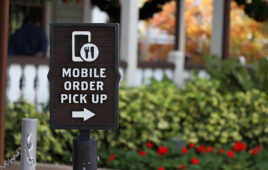 Last year, the Consumer Financial Protection Bureau (CFPB) issued an update to the Electronic Fund Transfer Act that increases protections on prepaid accounts and governs them more similarly to checking accounts. These rules are helping fuel the continued growth of prepaid cards, both in open-loop cards for multiple items like bill pay or healthcare spending accounts and closed-loop cards that can only be used in one store or as part of a loyalty program.
Last year, the Consumer Financial Protection Bureau (CFPB) issued an update to the Electronic Fund Transfer Act that increases protections on prepaid accounts and governs them more similarly to checking accounts. These rules are helping fuel the continued growth of prepaid cards, both in open-loop cards for multiple items like bill pay or healthcare spending accounts and closed-loop cards that can only be used in one store or as part of a loyalty program.
Their continued popularity as gifts is also helping drive the segment and making companies consider their own branded cards.
“As the No. 1 most-requested gift by U.S. consumers, gift cards are really a customer expectation,” said Darek Mose, consumer card manager at Chevron. “That’s why we’ve expanded to the digital eGift card — to meet those expectations and help provide a better customer experience through mobile devices.”
Mercator Advisory Group’s data shows that the amounts loaded on prepaid open-loop cards will continue to skyrocket. In 2012, $64.5 billion was loaded onto prepaid cards.That number is projected to be $132.2 billion in 2020 and $141.5 billion in 2021. And becoming more flexible and useful is helping continue the expansion.
General Purpose Reloadable
“Prepaid cards will continue to grow through new innovations,” said Sue Brown, director, prepaid advisory service, Mercator Advisory Group. “A few features technology brought to prepaid cards include peer-to-peer payments, mobile remote deposit capture and robust mobile apps. There are several segments that are mature, like general purpose reloadable (GPR) and payroll. GPR cards are most frequently used as a substitute for a checking account, or as a means to control or budget spending.”
Supermarkets still dominate the market, but Mercator’s survey of where people buy GPR cards and non-GPR cards showed that one-quarter bought general purpose, non-reloadable gift cards at convenience stores and 23% bought GPR cards at c-stores. With so much convenience and so many usage options, the only limits to prepaid are how a customer wants to use them.
“The best way to choose and use a prepaid card is based on each individual’s banking needs,” Brown said. “If you load cash, then choose a card with free loading. If you have direct deposit and need ATM access, choose one with free ATM withdrawals. Need to deposit checks, choose one with mobile remote deposit capture. Prepaid cards do not have to be a one-size-fits-all option.”





